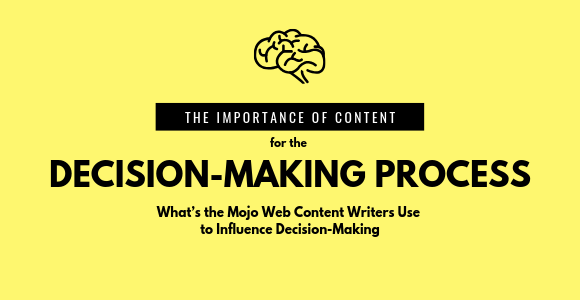For the most of it, our brains still remain an uncharted territory. What we’ll be exploring today, is not the occasional trick of the light that lures you into buying something you didn’t want. Instead, we will look at the way skilled web content writers craft their copy in order to influence a decision of any type. Whether it’s to buy, subscribe, follow, share, and so on. Basically, we’re talking about the psychology of engagement.
Think about the last thing you bought. Did you do it out of real necessity or you just saw it advertised and wanted to give it a try? How about the last video you shared or the last post on Facebook you liked? Did you want to pass to your friends some piece of valuable content that corresponds with your views or tastes?
Building Trust
Spoiler: credibility is key
In order to establish any type of relationship, you need to start by planting the seeds of trust. When a content writer sits down to write any kind of website content, be it a blog or a service page, they think (or at least they should) of what the user will be getting out of reading it. Will it answer a particular question well and most of all, how is it going to do it?
The Goal: Creating Unbiased Content
Especially true for the blog format, writing highly informative and unbiased articles is one way for writers to win the customer over. Be it by throwing in statistics, recent studies, third-party expert opinions, tried and tested methods, or just talking about a topic in an unbiased manner. The last one is actually very important. The second people detect that you are biased towards what you’re talking about, it becomes significantly less likely to influence their decisions.
Sense Of Humor & Familiarity
Making relatable content
If you are anything like me, you probably scroll down through your Facebook feed’s thousand memes each day. You probably share one or two because they are funny and relatable. Memes are also a perfect example of a great technique that web content writers use subtly to sway you to explore a product or a brand. Namely, using humor and relatability to make you subscribe, share, or even just talk about it.
It’s something that not just social media content creators should draw on.
The other part of the equation, familiarity, is easy to achieve if you know well your customers. Unless your content targets a very wide audience, picking your words and topics in a way that resonates with a specific group is how you achieve familiarity. Even when it comes to verbiage and industry parlance.
A Simple One – The Question Ending
Spark immediate engagement
In this podcast from the Marketing School, Neil and Eric talked about a simple technique that web writers use on all content distribution channels. Ending your piece with a question makes it more intuitive to continue the conversation and thus, engage people to spend more time on your content. Which in turn, not only raises awareness but in the long run, it brings people one step closer to purchasing whatever you are offering.
The Emotional Side of Things
Creating content that ‘hits right in the feels’
This technique is my favorite. You might not think of yourself as a person who is in touch with their feelings or that you don’t base too much of your decisions on an ephemeral emotional state. But, my oh my, there are so many of these instances in our daily lives.
To make a point here, I will use Disney as an example, and by that, I mean all its daughter companies and brands.
Disney has mastered emotional storytelling at a very high level.
I’m going to use my personal experience here (having worked in the Florida parks for a year), and tell you that Disney fans are among the most loyal I’ve ever seen in my life. I’ve observed their decision-making process on a daily basis and what I learned is that Disney is king not just because of its original filmmaking and attractions.
It’s the emotional connection with their brand. It’s the storytelling and the “place where dreams come true“ mentality.
Evoking a strong emotional response is also used by marketers and content writers who understand social trends, such as FOMO and YOLO. We’ve covered that already, so if you are unfamiliar with these abbreviations, check this out.
Can you think of a time you ended up engaging in one way or another with a brand because of any of the above-listed techniques? Do you use them yourself? If you feel like sharing, you are very welcome to do so in the comment section below.







